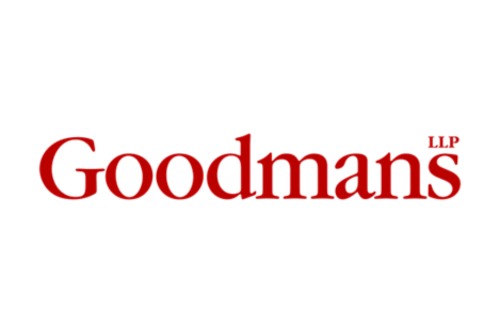Canadian and global M&A markets showed record-setting transaction activity following the start of the COVID-19 pandemic in 2020 through to mid-2022. Despite operational disruptions, governmental restrictions, and supply chain issues, a low-interest rate environment and a surplus of dry powder readily available to private equity investors drove increases in market activity. By contrast, current geopolitical and economic factors, including higher interest rates, persistent inflation, and the threat of an economic recession, are now contributing to a decrease in deal activity. Canadian M&A deal volume declined by over 20% in Q1 2023 compared to Q1 2022 and Global M&A deal volume hit a 12-month low in May 2023.
In addition to declines in deal activity, global economic conditions have contributed to increased friction between buyers and sellers over financial forecasts and purchase price multiples. Valuation gaps between buyers and sellers can pose a threat to the efficient execution of private M&A transactions. Where parties cannot agree on a target’s financial and/or operational outlook, negotiations related to purchase price and deal structure can be protracted and expensive. Economic and market conditions contributing to the valuation gap have also created a challenging lending environment where buyers may not be able to access traditional institutional acquisition financing on acceptable terms. Notably, many major central banks, including the Bank of Canada, have rapidly increased policy interest rates in response to high and persistent inflation, which has led to a tightening of lending standards.
To overcome valuation and funding issues and successfully close transactions, dealmakers will need to continue employing creative solutions and structures in their private M&A transactions. Though no single solution provides a panacea for all challenges, this article shares several commonly used structures as well as innovative solutions that may be combined to support success in private M&A transactions.
Earn-outs
Earn-outs continue to be one of the most commonly used mechanisms to bridge a valuation gap. An earn-out is a contractual provision whereby a portion of the purchase price in an M&A transaction is contingent on the target business meeting financial or operating milestones in a defined period post-closing. For example, a buyer may agree to pay a seller a percentage of revenue generated by a target business during the two years following closing, subject to a maximum value. Earn-outs help reduce the valuation gap by tying the final purchase price to actual results of the target business post-closing, making pre-closing expectations and forecasts less relevant. They align the parties’ interests during the transitional post-closing period and are especially effective where sellers maintain an economic or operational role with the target business after the transaction. Earn-outs also present a deferred financing option for buyers, which can be useful in a high-interest-rate environment where borrowing is increasingly expensive.
Parties considering an earn-out should consider certain key terms, including (i) the portion of the purchase price subject to the earn-out (versus paid up-front at closing), (ii) the duration of the earn-out period, (iii) the performance metrics that will be used to determine the value of the contingent payment, and (iv) governance rights during the earn-out period. In addition, consideration needs to be given to the interaction and ranking between the earn-out obligations and any other liabilities of the target, including any third-party financing arrangements.
Historically, revenue and EBITDA have been the most commonly used performance metrics in earn-outs. More recently, transaction participants are using more creative measures to better tailor the earn-out for their deal. For example, some parties have tied earn-outs to annual growth or particular client satisfaction indicators. Buyers and sellers can also add additional terms to the earn-out provision such as an acceleration feature (e.g., earn-out is payable on a change of control) or a discounted pre-payment option that mitigates the buyer’s earn-out exposure. Notably, earn-outs can combine several of these features and be payable in tranches having different metrics and timing.
While the foregoing benefits make earn-outs an attractive tool for both buyers and sellers, their drawbacks are well-publicized. Earn-outs consistently lead to disputes over the interpretation and measurement of target milestones. They also often limit a buyer’s ability to freely conduct the business during the earn-out period - earn-out provisions typically include detailed post-closing operating covenants that may prioritize short-term performance over long-term strategy. Given the likelihood of disputes, earn-out provisions can be heavily negotiated and can increase transaction costs. As a result, earn-outs may not be appropriate in all cases.
Alternative Financing
In the current high inflation and rising interest rate environment, securing access to traditional acquisition financing has become more challenging and has increased transaction costs. Where a valuation gap is created or exacerbated by increased borrowing costs, or where financing from traditional banks is not available, buyers may look towards alternative funding sources to finance acquisitions.
Seller Financing
Seller financing (or vendor take-back financing) is a form of financing provided by sellers that enables buyers to defer payment of the purchase price for a pre-negotiated period. In challenging economic markets where access to institutional financing is limited or too costly, buyers may incorporate seller financing on its own or in combination with other forms of non-cash consideration to bridge transaction funding gaps.
Seller financing often involves the buyer issuing a promissory note or “seller note” to the seller as part of the non-cash consideration to satisfy the purchase price. The seller note is typically paid over a specified period at a pre-negotiated interest rate. Consideration needs to be given to the relative ranking of the seller note vis-à-vis the buyer’s or target’s third-party financing arrangements, including any subordination or other restrictions on payment that may be required by the buyer’s third-party financing sources. Repayment may be unsecured, or the parties may negotiate the granting of security (including over some or all assets subject to the acquisition) or other credit support such as parent guarantees or personal guarantees. Seller notes and any credit support therefore will require the negotiation of intercreditor arrangements with third-party financing sources and will introduce additional complexity to the transaction.
Incorporating seller financing can provide several benefits to a buyer, including facilitating debt financing where the buyer cannot raise sufficient funds from third-party lenders. Sellers accepting a seller note in connection with a transaction should ensure they understand the buyer’s creditworthiness, the value of collateral or guarantees securing payment, and any subordination risk.
Private Lending
Private lending commonly refers to loans made by debt funds or other non-financial institution lenders. Large private equity players such as Blackstone, Apollo, Oaktree, Carlyle, among others, have established dedicated debt funds and taken a larger share of the lending market in the last decade, typically in transactions where traditional bank financing is not available due to tightening lending standards, industry sensitivities or structural complexity. For example, traditional lenders may be less willing to offer junior or mezzanine debt financing which is subject to prior ranking senior debt, or where the nature of the business or the collateral package may increase enforcement and realization risk beyond the tolerance of commercial banks. Private lenders can often create bespoke structures that meet a buyer’s specific needs for a particular transaction and provide additional flexibility. Though loans from private lenders can be more expensive than traditional bank loans, buyers have nevertheless chosen this option where regulatory, capital, and other constraints have reduced the ability of banks to provide sufficient debt on optimal terms.
Get to know the best banking lawyers in Canada as ranked by Lexpert here.
Business Division and Asset Carve-Outs
Where the valuation and/or funding deadlock cannot be broken through the methods mentioned above, parties may consider excluding from a transaction certain assets that present the largest points of contention over appraisal. Specific business divisions or assets that are difficult to value given market uncertainty are increasingly being excluded from transactions and/or sold to secondary buyers to avoid pricing disputes. For example, in connection with a sale to a financial buyer, a seller may choose to divest one or more business divisions to a strategic buyer that can realize certain synergies in future operations. Pursuing these alternatives allows buyers and sellers to avoid protracted negotiations over asset valuation or purchase price multiples concerning the excluded assets. This solution also allows sellers to realize ongoing value and recurring revenues from carved-out assets while waiting for the market to stabilize and valuations to crystalize. In some instances, where the excluded assets are utilized by the target business, this mechanism further may align the interests of buyers and sellers through ongoing commercial relationships (e.g., where a business continues operations on retained real estate that is leased to the target post-closing). Before executing a carve-out transaction, parties should consider the additional complexity and costs, including any transitional services arrangements required to support the target business post-closing.
Partial Acquisitions, Equity Rollovers and Buyer Exit Participation
Where a valuation gap or other deal challenges persist, a buyer may agree to acquire less than 100% of a target business. A partial acquisition is sometimes coupled with a put and/or call option allowing the buyer to acquire the remaining stake in the business at a later date and at a price based on a formula agreed to by the parties at closing. As with earn-outs, buyers require less upfront capital, allowing for deferred financing costs where the transaction is being financed by debt and mitigating the current high-interest rate environment. When coupled with a put/call for the remaining stake, partial acquisitions further connect the purchase price with actual results and provide optionality. While sellers do not receive the same level of return up front as they would selling the entire business, they are provided partial liquidity and the opportunity to participate in the upside of the business following closing. Partial acquisitions can also further align the parties where sellers retain a management role after closing.
The put/call structure allows parties to negotiate a formula to determine the appropriate price at which the remainder of the business will be acquired. The key metrics used to determine the remaining purchase price (e.g., earnings, revenue, sales, EBITDA), the period in which such options can be exercised and other terms of the put/call structure will be specific to the transaction and will often require significant negotiation. Given the performance of the target will generally determine the ultimate purchase price for the remaining stake, the parties should ensure that an appropriate governance structure is in place after the initial closing. This may include minority interest protections such as board nomination rights, consent rights over material decisions, and other operational controls.
As an alternative to a partial acquisition, the seller may agree to roll over a portion of its interest in the target business in exchange for an ownership stake in the buyer (or an established portfolio of the buyer). In such cases, the seller divests its entire interest in the target business, but ultimately retains ownership at the buyer or parent level.
In some transactions, parties have gone a step further and tied seller compensation to the buyer’s return on its exit from the business (despite sellers not retaining an equity interest or retaining a minority equity position). In such instances, transaction documents may specify a deferred or contingent purchase price tied to the buyer’s sale premium relative to its invested capital. This approach aligns the interests of the buyer and seller in the post-transaction period, reduces the upfront funding obligations of buyers, and protects sellers if the target business exceeds expectations post-closing.
Though there have been reductions in private M&A deal volume since the record highs of 2020 and 2021, there are many reasons to remain optimistic parties will continue to pursue transactions with strong business cases. The success of transactions that progress amid current economic challenges will hinge on participants’ and advisor’s preparedness to adapt traditional approaches and embrace customized, innovative solutions. Additionally, a practical and agile team that efficiently executes the deal will play a pivotal role.
***
Randy McAuley

Randy McAuley is a partner in a business law group at Goodmans.
His practice focuses on various aspects of corporate and securities law. Randy has acted for public and private entities, reporting issuers, investors, and underwriters in capital markets transactions, including mergers and acquisitions, corporate finance transactions, and corporate reorganizations.
***
Julian Di Bartolomeo

Julian Di Bartolomeo is a partner in a business law group at Goodmans.
He has a broad transactional practice involving all aspects of corporate and securities law, with particular emphasis on private equity transactions and public and private mergers and acquisitions.





